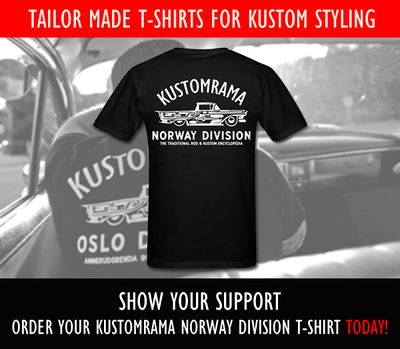The Wildcat Motorclub


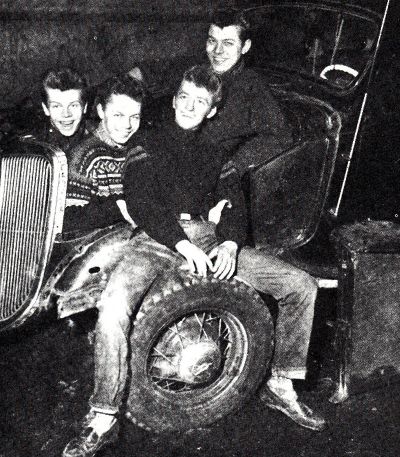
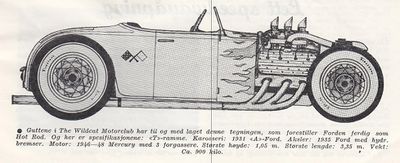
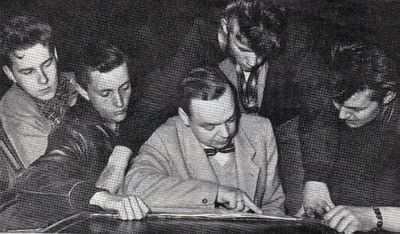

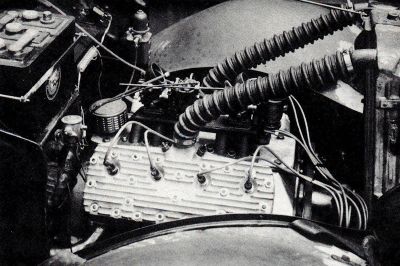
The Wildcat Motorclub was a hot rod club from Oslo, Norway. Founded in 1958, the club is known as the first hot rod club of Norway. The club consisted of teenagers from Frogner, and Tore Tømmerås was the first president of the club. Tore founded the club with two friends. It all started with an old Model-T Ford that they put together with limited funds and tools. As the club grew larger, the boys became aware of the hot rod culture through american magazines, and they started to disassemble the car again in order to convert it into a real hot rod. The club met every thursday on a courtyard in Frogner to work on the Model T. In addition to the Model T, Tore Tømmerås owned a 1935 Ford 5-Window Coupe. In 1958 the Norwegian magazine Speed-Nytt did a featured story on the newly established club. By then the club consisted of 11 members. At the time, the guys were busy removing rust from the old Model T. They had spent the winter constructing and designing the car on paper before the actual work began. One of the drawings were published in Speed-Nytt 4/1958, and it shows that the boys wanted to build a flamed and fenderless 1931 Ford Model A roadster on a Model T frame. The Wildcat roadster featured wire-wheels and Firestone whitewall tires, 1935 Ford axles, hydraulic brakes and a 1946 - 1948 Mercury V8 engine that were fed through three carburetors. Other notable features included a cut-down 1932 Ford grille and exhaust that rand underneath the body. The height was about 1,05 meters, the length approximately 3,35 meters and the weight was about 900 kilograms. Each member had to pay a member fee of 2 Norwegian kroners in order to join the club. A weekly fee of 50 Norwegian øre secured funds to buy tools and parts for the club car.[1]
In addition to hot rods, the guys in the club did also work on motorcycles and mopeds. According to the article printed in Speed-Nytt 4/1958, non of the boys in the club had a profession working on cars, but one had just started his education when the article was written. At the end of the article, the publishers encouraged more Norwegian teenagers to build their own hot rods and form their own hot rod clubs. They were even willing to guide kids through the builds and forming of the clubs.[1]
September 2, 1958 board members from The Wildcat Motorclub and Oslo Hot Rod Klubb held a meeting together discussing a cooperation and the forming of different drag racing classes. They knew they were pioneers in the field, being members of the first hot rod clubs in Norway. Together they decided that the different classes should be formed based on:
a. The weight of the cars, minus ballast, gas and the driver.
b. Height from the ground to the highest point of the car, minus antennas, flag-poles and so on.
c. The number of cylinders: 4-6-8. Straight or V-shaped engines competing in the same classes. An additional class was formed for engines with more than 8 cylinders.
The dragstrip was also specified during the meeting. And the members agreed about having a relatively short dragstrip compared to the shutdown area. By having a long shutdown area, the racers could have as fast as speed as possible when you crossed the finish-line. Good acceleration was therefore important if you wanted to win. The long shutdown area was necessary due to the high speed. A short shutdown area could result in damaged parts on the old cars due to hard braking. Two cars could race head on. The length of the dragstrip was set to be about 405 meters. Unfortunately the drag racing dreams never came through for the young boys. Eager for speed, ice and dirt-track racing became their only alternative.[2]
Both The Wildcat Motorclub and Oslo Hot Rod Klubb were short-lived clubs. As the members grew an interest in girls, it became hard to maintain the weekly club nights, and both clubs faded out. The boys kept their cars and used them regularly, but by the early 1960s both clubs were history.[2]
Members
Arne Skuland[3]
Bjørn Hoel
Endre Engebretsen[3]
Erik Eriksen
Harald Fjærvoll
Kåre Ask
Per Melbye
Per Røed
Sten Johanson
Terje Buaas
Terje Remberg
Tore Tømmerås
Club Cars
Per Røed's 1932 Ford Cabriolet
Tore Tømmerås' 1935 Ford 5-Window Coupe
References
Did you enjoy this article?
Kustomrama is an encyclopedia dedicated to preserve, share and protect traditional hot rod and custom car history from all over the world.
- Help us keep history alive. For as little as 2.99 USD a month you can become a monthly supporter. Click here to learn more.
- Subscribe to our free newsletter and receive regular updates and stories from Kustomrama.
- Do you know someone who would enjoy this article? Click here to forward it.
Can you help us make this article better?
Please get in touch with us at mail@kustomrama.com if you have additional information or photos to share about The Wildcat Motorclub.
This article was made possible by:
SunTec Auto Glass - Auto Glass Services on Vintage and Classic Cars
Finding a replacement windshield, back or side glass can be a difficult task when restoring your vintage or custom classic car. It doesn't have to be though now with auto glass specialist companies like www.suntecautoglass.com. They can source OEM or OEM-equivalent glass for older makes/models; which will ensure a proper fit every time. Check them out for more details!
Do you want to see your company here? Click here for more info about how you can advertise your business on Kustomrama.

